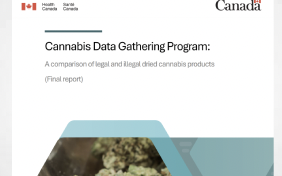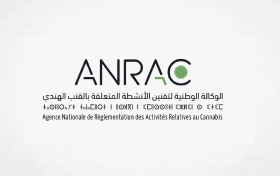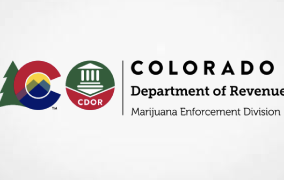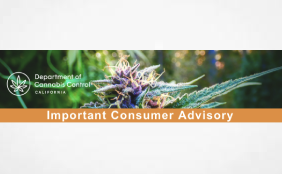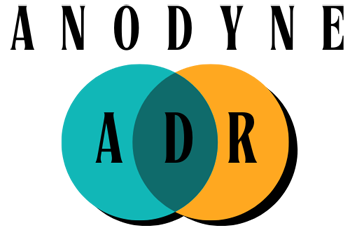- Organization: Health Canada
- Date published: 2025-02-21
- Summary
- What is the Cannabis Data Gathering Program
- Why did we conduct this survey
- What did we sample
- How were samples analyzed and assessed
- What were the survey results
- Conclusion
- Appendix A: List of pesticide residues included in multi-residue method
Summary
The Cannabis Data Gathering Program (the Program), launched in 2023 by Health Canada’s Cannabis Laboratory, helps Health Canada collect information on the composition and quality of cannabis products available in Canada. The Program projects provide new data on cannabis where information may be limited, providing new evidence about potential risks and emerging trends. This strengthens Health Canada’s ability to regulate the cannabis industry and inform Canadians about the health and safety risks associated with cannabis use. Information from the Program projects will also guide future regulatory, inspection, surveillance and outreach efforts.
The main objective of this first project under the Program was to generate baseline data on total Delta-9-tetrahydrocannabinol (THC) levels, heavy metals, mycotoxins, pesticides and microbial contaminants in dried cannabis, both legal and illegal, available on the Canadian market. In this initial survey, 100 dried cannabis samples (50 legal and 50 illegal) were tested, revealing the following trends:
- Total THC levels: Among legal products, a significant proportion showed total THC levels below their declared amount, with 48% having total THC levels under 80% of their label claim. None of the illegal cannabis products seized by law enforcement included label information when submitted to the laboratory. Analysis revealed wide variability in total THC potency, ranging from less than 100 mg/g to more than 250 mg/g.
- Heavy metals: All samples collected were analyzed for a suite of 18 metals. Regarding the 4 most commonly tested metals (arsenic, cadmium, lead and mercury), only one illegal sample had arsenic levels above the United States Pharmacopeia (USP) tolerance limit set for inhalation. Overall, however, these metals were present in a significantly higher proportion of the illegal samples. On the other hand, copper, molybdenum and nickel were found in a large proportion of both legal and illegal samples, some in concentrations exceeding tolerance limits.
- Mycotoxins: None of the 6 mycotoxins tested were found in legal products. In contrast, 6 illegal samples tested positive for either ochratoxin A or deoxynivalenol (DON).
- Pesticides: Only two legal products showed trace levels (0.01 parts per million [ppm]) of pesticides out of over 300 pesticide residues tested. In comparison, 94% of illegal samples had multiple pesticides, averaging 3.4 pesticides per sample, with a total of 24 different pesticides identified, some at very high levels. The most commonly found pesticides in illegal samples were myclobutanil and paclobutrazol.
- Microbial contaminants: Although a few legal products tested positive for microbial contaminants, illegal cannabis products were found to have significantly higher levels of microbial contamination when compared to cannabis obtained from the legal market, often exceeding European Pharmacopeia (Ph. Eur.) limits. These included opportunistic pathogens such as Enterobacter cloacae and bacteria associated with respiratory infections such as Klebsiella spp. and Pseudomonas aeruginosa.
This survey represents an important step in understanding the composition of dried cannabis available in Canada. By analyzing dried cannabis samples, Health Canada has generated baseline data on total THC levels, heavy metals, mycotoxins, pesticide residues and microbial contaminants, showing significant differences between the legal and illegal markets.
The findings underscore the importance of ongoing data collection to identify trends, inform regulatory decisions and improve product safety. Future projects under the Program will build on these results, enhancing Health Canada’s ability to protect public health, guide regulatory actions, and support Canadians in making informed choices about cannabis use.
What is the Cannabis Data Gathering Program
The Government of Canada is committed to providing the public with the information they need to make informed decisions and minimize the health and safety risks associated with cannabis consumption. The Cannabis Act and Cannabis Regulations establish a comprehensive legal framework governing the production, distribution, sale, import, export and possession of cannabis in Canada. The purpose of the Act is, among other things, to:
- protect public health and public safety,
- provide access to a quality-controlled supply of cannabis.
Launched in 2023 by Health Canada’s Regulatory Operations and Enforcement Branch Cannabis Laboratory, the Cannabis Data Gathering Program (the Program) aims to support Health Canada’s efforts to collect data on the quality and composition of legal and illegal cannabis products available on the Canadian market. Through targeted data gathering projects, the Program plays a valuable role in identifying new or emerging hazards, analyzing trends as well as promoting compliance with Canadian regulations. The program strengthens Health Canada’s ability to regulate the cannabis industry and inform the public as well as external organizations about potential health and safety risks associated with cannabis consumption.
In addition, the Program will guide future compliance promotion, inspection, monitoring and outreach activities. Where the analyses conducted reveal deficiencies in legal products, appropriate compliance and enforcement actions will be taken to mitigate the identified health and safety risks, where necessary.
Why did we conduct this survey
The objective of this specific survey was to proactively collect a broad range of analytical data from legal and illegal dried cannabis products. The project included testing for total THC levels, heavy metals, pesticide residues, mycotoxins and microbial contaminants, with the goal of generating initial data on the composition and contaminants present in dried cannabis products available in Canada. Dried cannabis was selected as the first focus of the Program because it is the most commonly used form of cannabis in the country since legalizationFootnote1.
Cannabinoid levels in cannabis products can change over time, impacting their composition and quality. Compounds like THC are sensitive to light, heat and oxygen, which can cause degradation and loss of product potency. This means that the cannabinoid levels listed on the product’s label, which reflect the potency at the time of packaging, may not match the actual levels over time. Additionally, some products may show higher total THC levels on the label than they contain due to testing inaccuracy, unrepresentative sampling or the observed phenomenon of THC inflation. For example, if samples are not mixed evenly before testing or if reference standards have degraded, total THC levels may not be representative of the entire lot or batch, leading to inconsistent or inaccurate results on labels.
Contamination is another potential problem with cannabis products and can occur at any stage, from cultivation and processing to packaging. Hot and humid conditions during cultivation can cause mould growth, including Aspergillus spp., which can produce harmful toxins called mycotoxins. Bacteria can also grow if products are stored improperly, especially in humid environments. Pesticides may be present from environmental exposure or deliberate use by growers to protect crops. Metals, which naturally occur in water, soil and air, can accumulate in cannabis plants. Certain metals, such as arsenic, cadmium, lead and mercury, pose health risks even at low levels.
By collecting data on potency and contaminants found in dried cannabis products available on the Canadian market, this survey supports the Government of Canada’s ability to regulate the cannabis industry and commitment to providing Canadians with the information they need to make informed decisions and reduce health and safety risks associated with cannabis use.
What did we sample
A total of 50 legal dried cannabis products were purchased from five retailers across Canada, from both online and brick and mortar stores. These retailers were located in four different geographic regions in Canada: Atlantic, Quebec, Prairies and British-Columbia. We targeted THC products (with little/no cannabidiol [CBD]) containing up to approximately 250 mg/g total THC.
The objective was to select dried (excluding pre-rolled) cannabis products from as many brands, licence holders and provinces of origin as possible. Products were randomly selected from 50 different license holders (Table 1) and sampled between September and December 2023, with packaging dates on products received ranging from October 2022 to September 2023. All legal products collected were labeled with a note stating that “no expiry date has been determined”
data-gathering-program-comparison-legal-illegal-dried-cannabis-products
